My first assignment at The Reporter in Addis Ababa was to write a piece about my first impressions of Ethiopia. It wasn’t for publication, just designed to give the editor an idea of my writing style. I hadn’t done too much exploring around the city when I wrote this so it’s a little bit airy fairy, but I think it gives a good sneak peek into how I was feeling in those first few days.
Also, sorry for lack of quality pictures! It’s hard to take snaps here because I stand out enough as it is and people are really just going about their day so it feels a little strange to take a snap. I’ll get over myself and do better for future posts though, I swear!
………..
Addis Ababa buzzes with energy and personality, an old city made young again by the vibrancy of the people who call it home. It may boast a few rough edges but beyond this disguise lies a soul of gold, like an overgrown garden that bares the sweetest, most delicious fruit.
Wandering down the aisle of my Ethiopian Airlines flight to Addis Ababa, I got my first peek into the new world I was entering. To my left and right were people bursting with colour and modernity. Women in brightly patterned blouses and sparkly sandals sat next to young men in snapbacks and polo shirts. A middle-aged man in a tweed jacket who would be right at home in a lecture theatre sat next to a group of older men in traditional dress.
A rich tapestry that only just scratched the surface of what was waiting for me in Addis Ababa.
The glamour and style that I saw on my flight was a true representation of the pride people take in their appearance in Addis Ababa. Both men and women take fashion seriously, and this interest does not seem to dissipate with age.
But for all the glamour the people of Addis Ababa possess, there is an equal amount of disarray throughout the city. Side streets are filled with craters and many footpaths are cracked and crumbled. It’s not uncommon to see elderly men and women sitting with heads bowed beside bustling streets or approaching passersby with pleading eyes. These are stark reminders of the struggles the city faces and make the progressive portion of the population look like they simply don’t belong.
The forces that bind these two sides of society together are much stronger than appearances. Devotion to human relationships and genuine care for others has been displayed far more frequently and openly than I have ever witnessed elsewhere.
People are the soul of this city, they are kind and they are warm. They have welcomed me with open arms even though my Amharic skills are poor and I don’t know how any of the city’s systems work. I have been treated like family because here, family means much more than blood. It encompasses friends, neighbours and long-standing connections. People come together to share the joys of life and when someone falls on hardship, theyhave hundreds of hands that are ready to pick them back up.
With kindness and support so free-flowing, it’s hard to imagine stress and worry plaguing Ethiopia like it does the western world. In Melbourne, being busy is seen as a great sense of achievement and a work-life balance does not exist for many. The people here seem to have their priorities much more in check, actively making time to spend with those they care about.
A show of love can be found in a smile or slight nod of the head, but one of the strongest ways people are brought together is through food. Meal time is about much more than sustenance, sharing a plate gives way to the sharing of stories between family members, friends and guests. It is a time to talk, laugh and take time out from busy schedules to enjoy the company of loved ones.
Cooking food is equally valued, as great time and care is taken to prepare nourishing dishes for the family. On my first day in Ethiopia, I was told that all the food they prepare is grown organically and sourced fresh.
“You’ll be able to taste the difference in the vegetables,” my host said.
She was right. I’ve pored over simple salads made of tomato, avocado and green peppers, and side dishes of sautéed beetroot and cabbage. Oils and seasoning are used minimally to bring out the natural personality of the produce and the resulting flavours need to be eaten to be believed. It’s disheartening to think about the diluted produce sold in supermarkets in the western world and that many grow up without even knowing what real food is supposed to taste like.
It seems as though in Melbourne we spend more effort attempting to understand what Ethiopian coffee tastes like, and after my first coffee ceremony in Addis Ababa I knew that we’ve never even come close. Like sharing meals, the coffee ceremony is seen as a way to take time out with loved ones. I sat and watched as the beans were slowly roasted, ground and then slowly brought to the boil with water in a heavy, black jug. Incense was burned and filled the room with a sweet, woody aroma.
The long brewing process ensures the final product is a rich, toasty liquid that glides down like silk. Served boiling hot in petite cups, this kind of coffee is designed to be enjoyed over time rather than slurped on the run. I enjoyed this ode to a traditional kind of coffee break, when time is taken out from the rat race to regroup and relax. The ceremony is often performed daily in Ethiopian homes, but similar brews can also be found streetside throughout the city.
Enjoying moments like this seems to be a mainstay of Ethiopian culture, a characteristic that has survived against the bully of globalisation. This is a rarity in the international community and a point that evokes great pride and exercises immense influence over the Ethiopian way of life, according to those I have met in Addis Ababa so far.
Without the pressure of external international forces, people can live the way they want and a number of unique systems have sprouted in the community as a result. The time-keeping system is different, street naming conventions virtually non-existent and ride-sharing dominant even before Uber was a twinkle in a young entrepreneur’s eye.
It may be true that sprinkles of western culture can be found around the city, such as Justin Bieber blaring from cars and burger restaurants popping up on street corners. But a clear balance has been maintained between Ethiopian culture and global forces. Even if youth in Addis Ababa dip their toes in pop culture from the western world, the strength of the family unit ensures their roots and value system remain firmly intact.
The gems hidden within Addis Ababa, and Ethiopia more generally, are only just starting to be discovered by the rest of the world. With historical sites, cultural attractions and natural beauty aplenty, the country is already hosting many tourists each year and is a hub for many international companies. But as more people begin to learn about this wonderfully complex country, I expect they will be as eager as I am to uncover the hidden secrets of Ethiopia.
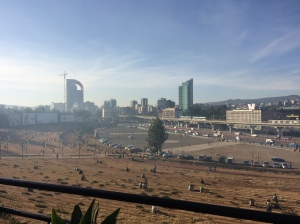
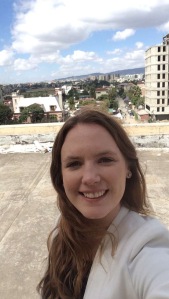

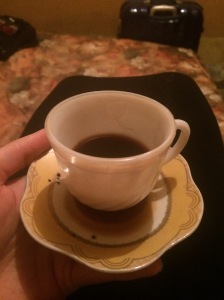
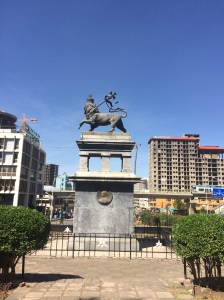
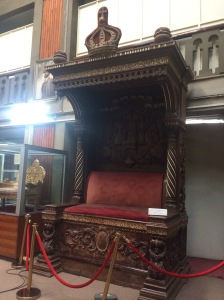

Certainly sounds like a fascinating place Elyse. Stay safe and well
LikeLike
I didn’t really know what to expect to everything here is a bit of a surprise. But the shocks are mostly good! Hope you’re well too and say hi to the girls for me! xx
LikeLike
Your words paint a picture in mind so that I feel like I’m breezing through Addis Ababa, like a tourist on a very quick visit! So eloquently written, Elyse.
LikeLike
Thank you so much Tanina! It really is a pretty incredible place, lots of hidden gems xx
LikeLike